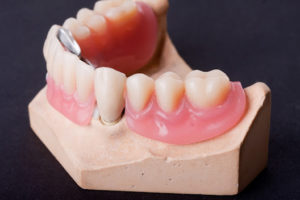Root Canal Versus Extraction: Which Is Better?

If you have a decaying or damaged tooth, you may have to choose between two treatment options: a root canal or an extraction. Extraction is easie
r and cheaper, but root canal treatment saves your natural teeth. So, how do you choose the best among the two treatment methods? This article provides the information you need to decide.
Root Canal Treatment
For root canal treatment, your dentist will remove the darkened part of the tooth and clean the infected pulp before adding a dental crown over the tooth. The dental crown will act like the tooth’s enamel without interfering with its functionality.
Why Choose Root Canal Treatment?
Unless your tooth is severely decayed, your dentist will recommend a root canal due to the following benefits.
Keep Your Natural Teeth
Instead of extracting your tooth due to a repairable cavity, you should try to save it. Refilled natural teeth are stronger than artificial teeth and won’t affect your biting patterns.
Maintain Your Youthful Appearance
Since the dentist will also pull the roots that support the jaw when extracting your tooth, the gap left in the bone can cause the surrounding bone to collapse in, making you appear older. Therefore, you should avoid tooth extraction to maintain your youthful looks.
Keep Your Confidence
The gaps left after tooth extraction can dent your confidence, especially if it is visible when you smile. In contrast, no one will notice the change if you undergo a root canal.
Avoid Shifting of Teeth
Gaps left after extracting your teeth may allow the surrounding teeth to shift and eventually lead to biting and chewing problems.
Get Immediate Pain Relief
You will most likely experience pain for some days after a root extraction. However, the pain will go away immediately after a root canal since the cleaning process eliminates the infection.
Save Money
Though extraction is cheaper than a root canal treatment, it will cost you more money to replace the extracted tooth. Tooth replacements also require regular dental visits.
Tooth Extraction
Despite the many benefits of keeping your teeth, extraction is necessary in the following situations.
Severe Tooth Decay
Severe tooth decay can damage your tooth’s enamel to a point where it can no longer withstand the force exerted when chewing. In this case, extraction is the only option because the tooth cannot hold a filling or dental crown.
Severe Infection
In addition to decay, a severe infection can lead to compulsory tooth extraction if it has spread deep into the root. Dentists recommend extraction for such cases because extraction is the only way to bring the infection under control.
Financial Constraints
Like any other disease, dental issues can strike any time, including when you are not financially prepared. In this case, extraction may be your only option due to the high cost of crowns and root canals. Later, you can seek other treatments like dental implants to improve your smile and prevent shifting teeth.
Severe Gum Disease
Severe gum disease can occur if you ignore crucial oral hygiene routines like brushing your teeth. If you don’t brush your teeth enough, bacteria will accumulate in your mouth and find their way into the spaces beneath the gums.
The bacteria under the gums will then produce acidic excretions that gradually destroy the periodontal ligaments and bone, loosening your teeth. In such instances, your dentist may recommend removing the loose teeth to keep the disease under control.
Dental problems can occur even when you maintain proper oral hygiene. Most dentists will recommend root canal treatment instead of extraction for tooth decay and infections, but sometimes, tooth extraction is unavoidable. Talk to our team at Apollo Dental Center to learn more about available treatment options for tooth decay and gum disease.
Reason for Root Canal Treatment
Crack or Chip in the Tooth
If the crack extends below the gum line, it is no longer treatable, and the tooth cannot be saved and will need to be extracted. The position and extent of the crack, however, will determine whether any portion of the tooth can be saved.

